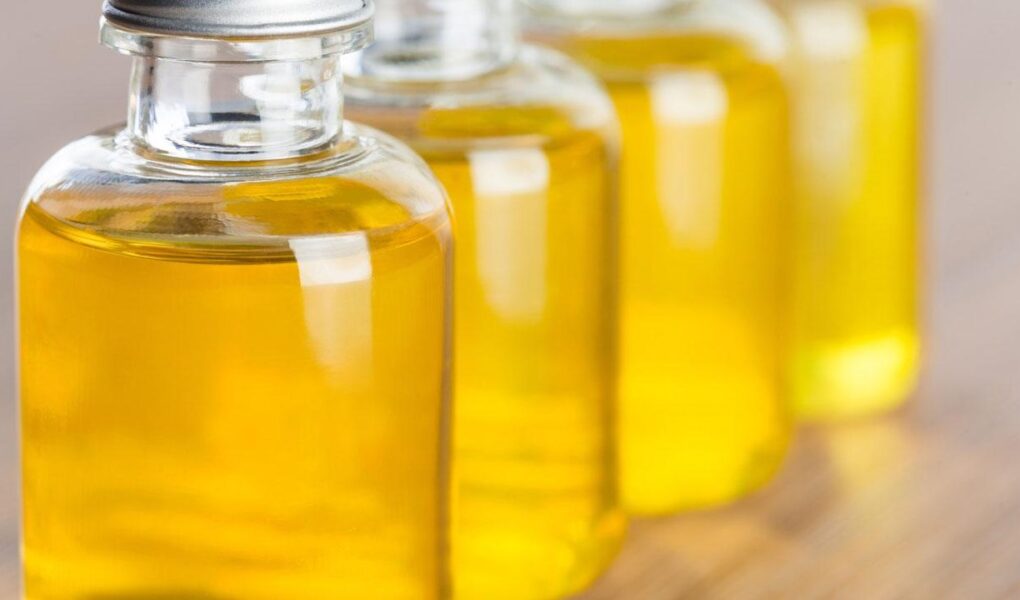In the intricate tapestry of cannabis, one thread stands out, weaving together a complex array of effects, societal conversations, and scientific inquiries. The psychoactive chemical in marijuana, known as tetrahydrocannabinol—or THC—serves as a pivotal player in the narratives surrounding this versatile plant. From ancient uses in traditional medicine to modern debates about legality and health, THC has sparked fascination and controversy alike. As we delve into the world of this powerful compound, we will explore its chemical structure, effects on the human mind and body, and the evolving perceptions that shape our understanding of marijuana in contemporary culture. Join us on this enlightening journey through the science and significance of THC, a compound that continues to challenge our views on wellness, recreation, and the natural world.
Table of Contents
- Understanding the Role of THC in Marijuanas Effects
- Exploring the Therapeutic Benefits of THC for Medical Use
- Navigating the Legal Landscape: THC Regulations and Implications
- Recommendations for Safe Consumption and Responsible Usage of THC
- Q&A
- The Conclusion
Understanding the Role of THC in Marijuanas Effects
The psychoactive compound in marijuana, primarily known as THC (tetrahydrocannabinol), is responsible for the myriad of effects experienced by users. When consumed, THC binds to cannabinoid receptors in the brain, which play a critical role in regulating a range of physiological and cognitive functions. This interaction catalyzes a cascade of effects, influencing both the body and mind in various ways. Some of the most notable effects include:
- Euphoria: Users often report feelings of happiness and relaxation.
- Altered Perception: Changes in sensory perception, time distortion, and an enhanced appreciation of sound and color are common.
- Increased Appetite: Often referred to as the “munchies,” THC can stimulate hunger and cravings.
- Anxiety or Paranoia: In some individuals, high doses may lead to feelings of anxiety or discomfort.
The extent and nature of these effects can vary significantly based on several factors, such as dosage, consumption method, and individual biochemistry. Additionally, THC’s interaction with other compounds found in marijuana, like CBD (cannabidiol), plays a significant role in shaping the overall experience. Understanding this interplay is crucial for both recreational users and those seeking therapeutic benefits. Below is a table that highlights key comparisons between THC and CBD:
| Compound | Effects | Psychoactivity |
|---|---|---|
| THC | Intoxication, euphoria, altered perception | High |
| CBD | Relaxation, anti-anxiety, pain relief | None |
Exploring the Therapeutic Benefits of THC for Medical Use
The therapeutic potential of THC, or tetrahydrocannabinol, has sparked significant interest among medical professionals and patients alike. Known for its psychoactive properties, THC is being researched extensively for its role in alleviating various medical conditions. Users report benefits such as:
- Pain Relief: Many patients find that THC can effectively reduce chronic pain, making it a more manageable experience.
- Appetite Stimulation: For individuals suffering from illnesses like cancer or AIDS, THC can help stimulate appetite and mitigate weight loss.
- Anxiety Reduction: When used in moderation, THC may help ease anxiety and promote a sense of calm.
Studies also demonstrate that THC interacts with the body’s endocannabinoid system, which regulates various physiological processes. Understanding this interaction can lead to enhanced treatments for conditions like:
| Condition | Potential Benefits of THC |
|---|---|
| Multiple Sclerosis | Reduces spasticity and muscle pain. |
| Glaucoma | Lowers intraocular pressure. |
| PTSD | Helps manage flashbacks and nightmares. |
Navigating the Legal Landscape: THC Regulations and Implications
As the legality of cannabis continues to evolve across various regions, understanding the intricacies of THC regulations is paramount for both consumers and businesses. Regulations often vary by state and country, making it essential to stay informed about local laws. Key factors influencing these laws include:
- Medical vs. Recreational Use: Different states may allow THC use solely for medical purposes or for recreation, each with its own set of regulations.
- Concentration Limits: Certain jurisdictions impose restrictions on the percentage of THC in products, impacting what consumers can access.
- Purchasing Age: Laws typically establish a legal age for purchasing THC products, akin to alcohol regulations.
Moreover, businesses involved in the cannabis industry must navigate a complex regulatory framework to ensure compliance and avoid legal repercussions. This complexity is compounded by factors such as:
- Licensing Requirements: Obtaining a license can be a rigorous process, often requiring comprehensive background checks and financial disclosures.
- Tax Implications: Many regions impose high taxes on cannabis sales, affecting pricing strategies and profit margins for businesses.
- Labeling and Marketing Regulations: Strict guidelines govern how THC products can be labeled and marketed to protect consumers and prevent misinformation.
| Aspect | Regulatory Impact |
|---|---|
| Use Type | Defines product availability and usage rights. |
| Age Restrictions | Limits target market and influences advertising strategies. |
| Taxation | Affects retail pricing and overall profitability. |
Recommendations for Safe Consumption and Responsible Usage of THC
When considering the consumption of THC, it’s essential to prioritize safety and well-being. Responsible usage begins with understanding your own limits and choosing products that suit your experience level. Here are some guidelines to keep in mind:
- Start Slow: If you are a novice, begin with a low dosage and work your way up, allowing time to assess how your body reacts.
- Know the Source: Only purchase products from reputable dispensaries to ensure quality and accurate labeling of THC content.
- Stay Hydrated: Drink plenty of water to combat potential dehydration and to help mitigate any adverse effects.
- Avoid Mixing: Do not combine THC with alcohol or other drugs, as this can amplify effects and lead to unpredictable experiences.
- Set the Mood: Consume in a comfortable, safe environment where you feel relaxed and at ease.
Additionally, being mindful of the legal landscape and local regulations surrounding THC use is crucial. Stay informed about dosage recommendations and any potential health implications. To help visualize responsible serving sizes, consider the following table:
| Product Type | Recommended Starting Dose | Onset Time |
|---|---|---|
| SMOKED VAPED | 5-10 mg | Immediate |
| EDIBLES | 2.5-5 mg | 30-90 min |
| TINCTURES | 1-2 mg | 15-60 min |
Q&A
Q&A: Unraveling the Psychoactive Chemical in Marijuana
Q1: What is the psychoactive chemical found in marijuana?
A1: The psychoactive chemical in marijuana is known as delta-9-tetrahydrocannabinol, commonly referred to as THC. This compound is primarily responsible for the mind-altering effects associated with cannabis use.
Q2: How does THC affect the human brain?
A2: THC interacts with the brain’s endocannabinoid system by binding to cannabinoid receptors, particularly CB1 receptors. This interaction can lead to various effects, including altered consciousness, mood changes, relaxation, and an enhanced sensory perception.
Q3: Are there other compounds in marijuana besides THC?
A3: Yes, marijuana contains over a hundred different compounds known as cannabinoids. One of the most notable is cannabidiol (CBD), which is non-psychoactive and often associated with therapeutic effects without the “high” that THC produces. Other compounds include terpenes, which contribute to the plant’s aroma and may influence its effects.
Q4: What influences the potency of THC in marijuana?
A4: The potency of THC in marijuana can vary significantly depending on several factors, including the strain of the plant, how it was cultivated, and the method of processing. Some strains have been bred to have higher concentrations of THC, while others may have more balanced profiles with varying levels of other cannabinoids.
Q5: Is THC safe for everyone?
A5: While many people use THC without apparent issues, it is not suitable for everyone. Individuals with certain medical conditions, or those who are particularly sensitive to its effects, may experience adverse reactions. Consulting with a healthcare provider is recommended for those considering THC for therapeutic use.
Q6: How does the legality of THC differ around the world?
A6: The legal status of THC varies widely by country and region. Some places have fully legalized cannabis for recreational and medicinal use, while others maintain strict prohibitions. It’s essential to be aware of local laws regarding THC and cannabis to avoid legal complications.
Q7: Can you describe the experience of consuming THC?
A7: Consuming THC can produce a range of experiences. Many report feelings of euphoria, relaxation, and heightened sensory awareness, while others may experience anxiety or paranoia. The experience can be influenced by factors such as dosage, the individual’s mood and environment, and previous cannabis use.
Q8: What are the risks associated with THC use?
A8: Potential risks of THC use include cognitive impairment, dependency, and an increased likelihood of experiencing anxiety or paranoia in some users. Long-term or heavy use may also have more serious health implications, particularly for developing brains in adolescents.
Q9: How are scientists studying the effects of THC and its potential benefits?
A9: Researchers are conducting various studies to understand THC’s effects on mental health, pain relief, appetite stimulation, and its potential application in treating certain medical conditions. Clinical trials and observational studies aim to gather evidence about its benefits and risks to inform future guidelines for use.
Q10: What should someone consider before trying THC for the first time?
A10: Prior to trying THC, an individual should consider their health history, the legal implications, their mental state, and the setting in which they plan to use it. Starting with a low dose, preferably in a safe and comfortable environment, is recommended to gauge personal sensitivity to THC.
In this Q&A format, I’ve maintained a neutral tone while providing informative answers crafted to enhance understanding of THC as a psychoactive compound in marijuana. Let me know if you’d like more details or specific topics covered!
The Conclusion
As we wrap up our exploration of the psychoactive chemical in marijuana, commonly known as THC, it’s clear that this compound is pivotal in shaping our understanding of cannabis and its multifaceted effects. From its historical roots to its modern applications in medicine, THC continues to intrigue scientists, lawmakers, and users alike. As research advances and societal perspectives shift, the conversation around cannabis and its compounds will undoubtedly evolve. Whether you view it through the lens of healing, recreation, or caution, the insights gained from understanding THC can pave the way for informed discussions and decisions. As we move forward, let’s continue to unravel the mysteries of this fascinating plant, keeping an open mind and a commitment to knowledge.


